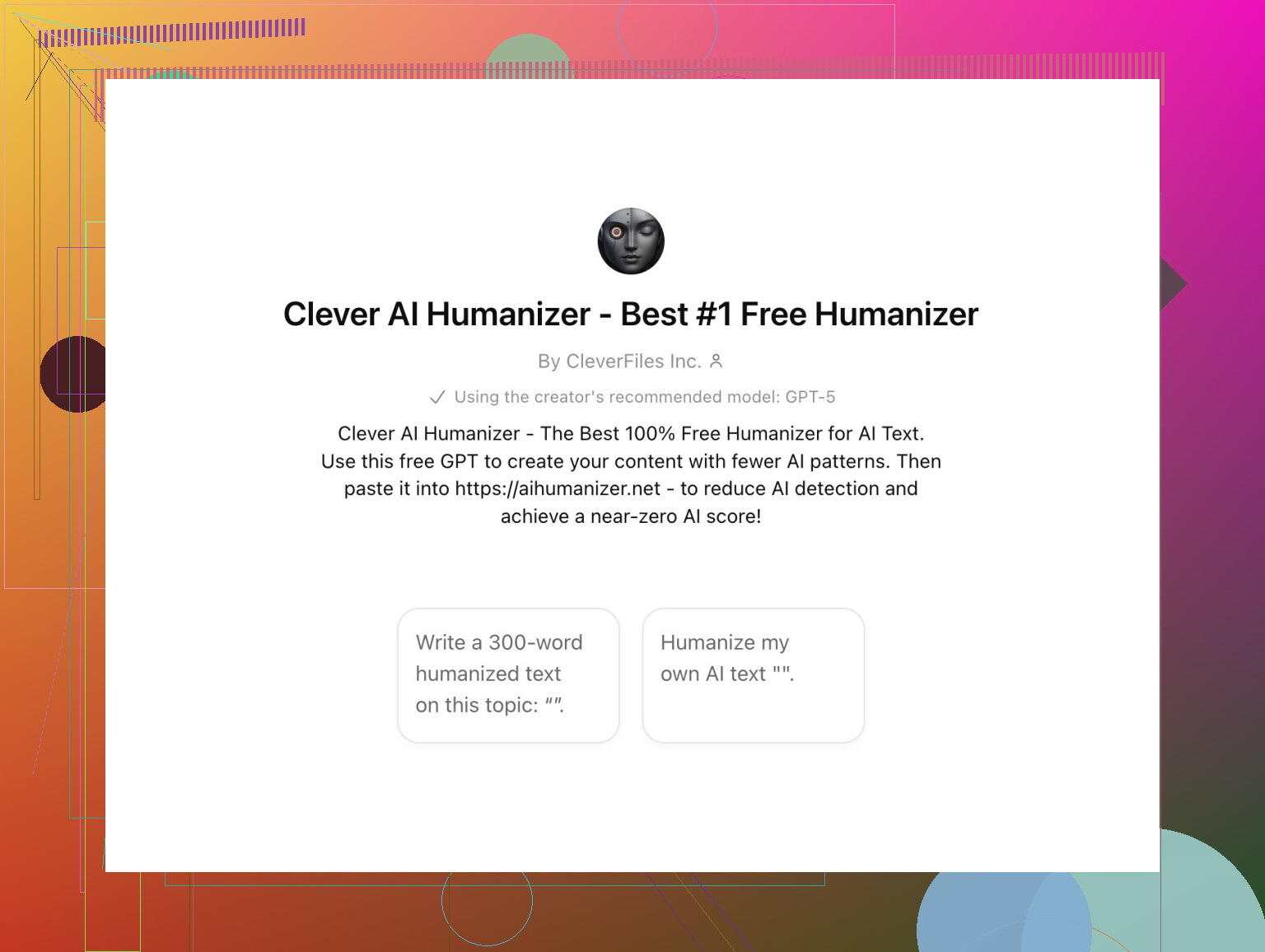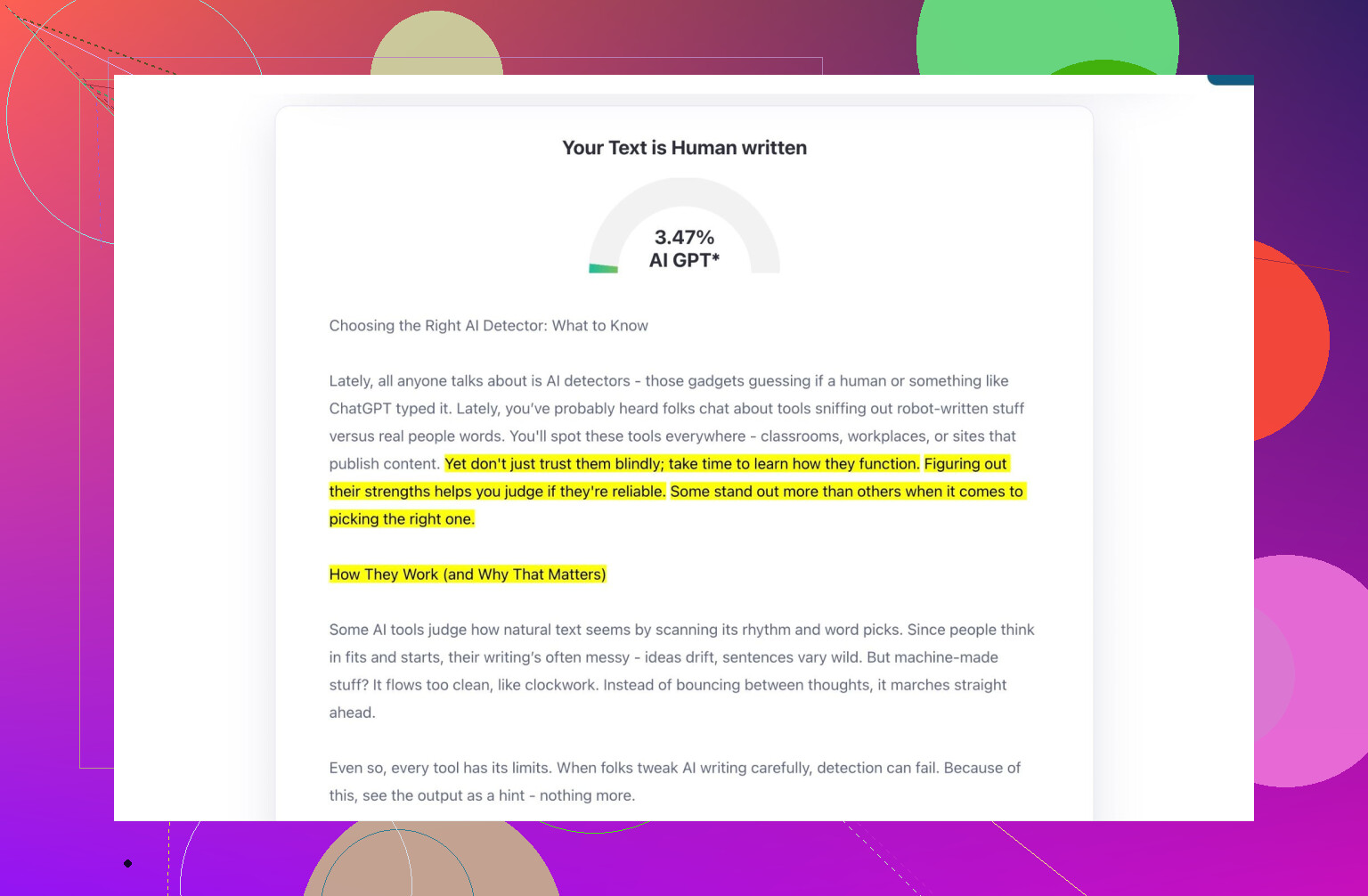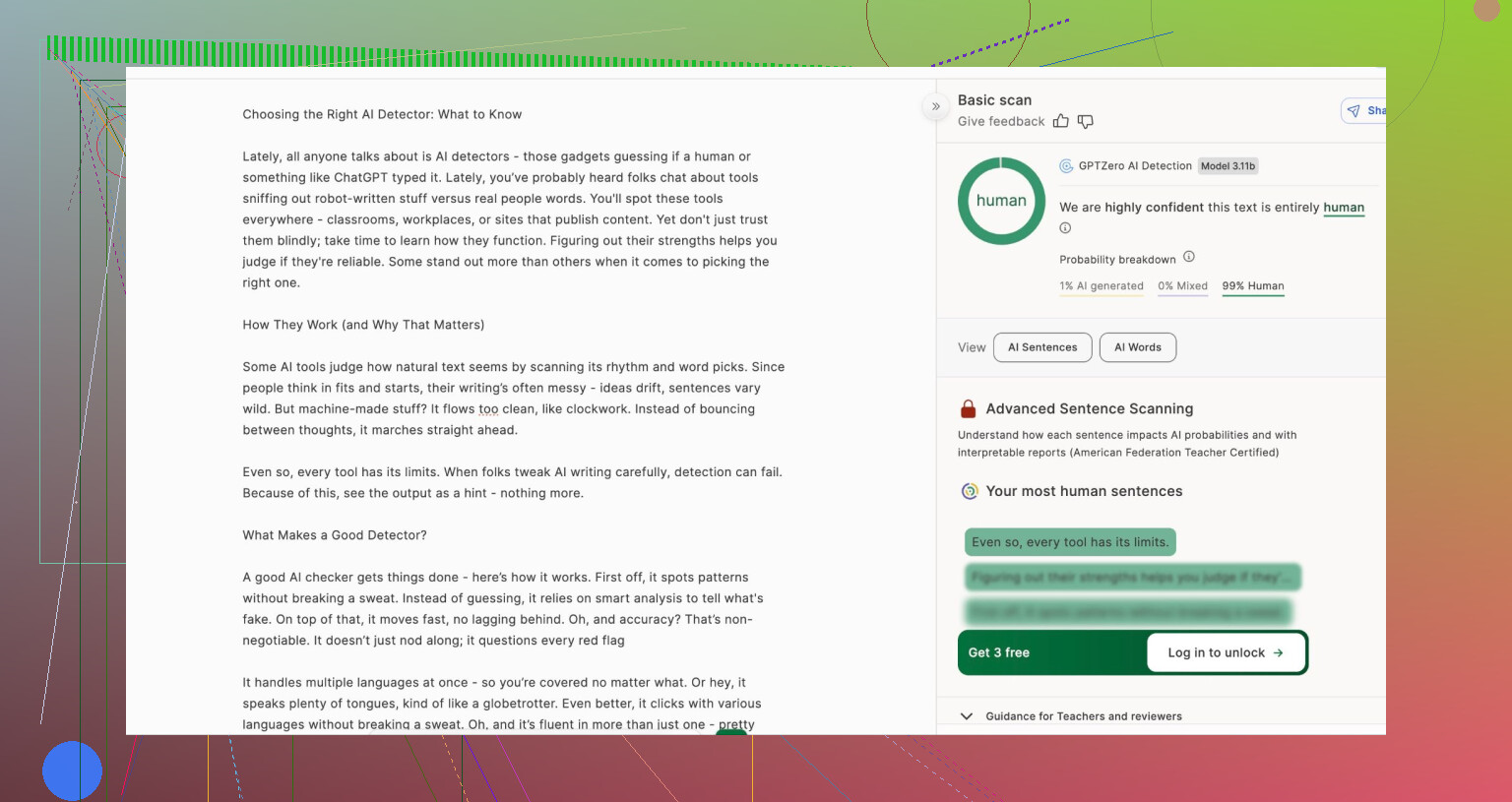I’m trying to get ChatGPT responses to feel more natural and human-like, but they still come across as robotic. What settings, prompts, or plugins can help make its replies more authentic and conversational? Any tips or tools that have worked for you would be appreciated.
So, I Fell into the AI Humanizer Rabbit Hole… Here’s How It Went
Alright, quick backstory for those nosy like me: I stumbled on some spicy discussions, and folks were raving about this two-step approach to making AI text pretty much undetectable. Think: writing that doesn’t have that classic “robot wrote this” aftertaste. Here’s my dig into the whole deal (screenshots included because I’m that person).
Where It All Starts (Or: Why Even Bother?)
There’s a trick floating around online: if you want your AI-generated content to pass those “Did a bot write this?” tests, don’t go straight from ChatGPT to your submission box. Instead, people are stacking tools, starting with a custom GPT on the ChatGPT site — which, apparently, takes the edge off obvious AI “tells.” Supposedly, using this setup from the get-go boosts your results by 20 to 30%. I know, I was skeptical too.
The Secret Sauce: Tools You Need
- Step One: Go craft your initial text over at the GPT Humanizer on ChatGPT. Supposedly, it’s tuned to not trip red flags.
- Step Two: Paste what you wrote into Clever Ai Humanizer for the final “human touch.”
There’s a pretty straightforward explainer here, too: https://www.instagram.com/reel/DP4Jaq5jn3d/ — no sign-up, just quick visuals.
But Does It Actually Fool the Detectors?
I fed my Frankenstein text monster into a couple of the harshest judges out there, just to see if it’d hold up:
ZeroGPT – The Main Gatekeeper
Yeah, look at that. Barely moved the dials.
—
Runner-Up: GPTZERO
Same result — the “AI” alarm is pretty much silent. To be honest, this one surprised me. I’ve tried all sorts of tricks (random synonyms, manual editing…) and my stuff still usually gets flagged. Not here.
TL;DR for the Scroll-Happy
- Compose your thing in the custom GPT Humanizer on ChatGPT.
- Run it through Clever Ai Humanizer for extra disguise.
- Test it against top AI checkers like ZeroGPT and GPTZERO.
- Celebrate quietly if your boss/professor never suspects a thing.
No hype, just what worked for me. If you’ve got a better method, let’s hear it — forums are for sharing, right?
Honestly, I get the obsession with making ChatGPT sound “more human”—who wants to read a reply that’s drier than a stale cracker? Saw @mikeappsreviewer’s rabbit hole exploration (had a chuckle, those screenshots say it all), but tbh, I’m a little less hyped about using extra humanizer layers every single time. Too much tech, not enough…well, feels.
Instead of just running stuff through plugins and calling it a day, I’ve found a few things actually make a diff straight from the prompt:
- Prompt it like a person: Don’t just ask for facts. Tell it, “Write this like you’re explaining to a friend,” or “Pretend you’re ranting about this.” The tone shifts a ton.
- Ask for personality/dialect: Toss in, “use some light humor and contractions,” or “make this sound a bit sarcastic.” Trust me, it actually tries.
- Break it up: Real people use short sentences, fragments, rhetorical q’s. Sometimes even a “yep” or “nah.” Don’t just post a block of text—mix it up.
- Leave some flaws: AI loves to be perfect and precise. But humans ramble, say “uh,” pause, and even make the odd typo (not that I’d ever, uh, do tht).
- Reference lived experience: Even if you have to nudge it, “Tell a quick story about a frustrating rainy commute” or something personal, it’ll improvise and sound more alive.
I’m not knocking the Clever AI Humanizer at all—honestly, it does add that last polish, and if you’re worried about AI detection, it’s a solid backup. Still, overrelying on masking tools feels a lot like slapping glitter on a robot—looks sparkly but it’s still a bot. If you want dead-on authenticity, the trick is to play with prompts, inject a little chaos, and edit out the stiffness yourself.
If anyone’s actually gotten a detector to consistently say “nah, this guy’s real” using just prompt tweaks and not external tools, spill your secrets. Otherwise, I guess it’s time to embrace our slightly awkward cyborg overlords.
Honestly, this whole “make ChatGPT sound human” thing is starting to feel like prepping for an undercover mission—except instead of fake mustaches, we’re layering on plugins and tweaking prompts. Saw @mikeappsreviewer’s experiment, and yeah, I’ll admit the humanizer tools fool most detectors, but running every. single. thing. through layers of tech gets old after a while. And then there’s @boswandelaar dropping tips about just playing with tone and keeping it messy.
Hot take? The real “human” vibe is in the unpredictability. Humans don’t use perfect sentences, we chase tangents, contradict ourselves, and sometimes just… get it wrong. Plug-ins like Clever AI Humanizer are legit if you need to pass a strict AI detector (or, let’s be honest, want a teacher off your back), but if you want to actually talk like a human, try this:
- Start your chat with something random—seriously, just crack a bad joke, or write “Ugh, why does coffee never work after 3pm?” before your actual prompt. ChatGPT will sometimes echo that looseness back.
- Chop up your reply when editing. Throw in an aside, a “wait, scratch that,” or leave a phrase hanging. Our brains fill in the blanks.
- Don’t be afraid of opinion. AI usually fence-sits. Just tell it, “Pick a side and go off a little,” and it’ll add some spice.
- Typing errors or slang? Sometimes a strategically-placed, “idk” or “tbh” makes things read way less botty. Bonus: that’s less work than running through multiple humanizers.
I get why some folks want that polished, undetectable text (hi, Clever AI Humanizer). But if you ask me, the best humanizer is to drop the script, be messy, and trust a little imperfection. That, or just sprinkle in a few memes and see if anyone notices.
Let’s address the whole “sounding human” obsession! Sure, stuff like Clever AI Humanizer gives your text a seriously strong shield against detection bots—think instant pass for ZeroGPT and friends, and it does polish out that AI shine. Pros? No more sleepless nights worrying if your essay gets flagged, and almost zero effort (copy, paste, done). Cons? Sometimes, texts run a bit too smooth or a little generic—like a sitcom script where nobody actually interrupts or rambles off-topic.
Here’s the hot take: relying just on plugins will get you past detectors—but your writing still might not “feel” truly alive to actual humans. The approaches from boswandelaar or nachtschatten—embracing tangents, opinions, and some honest-to-goodness messiness—bring an edge that tools alone can’t fake. Like, when was the last time you typed a perfect paragraph in a group chat? Exactly.
Want the sweet spot? Use Clever AI Humanizer to breeze by detectors, but then rough your text up a bit: toss in a half-finished thought, go bold on an opinion, or insert that “oops, meant to say…” Energy matters more than perfection! Competitors are on track with taking risks and voice, so experiment: don’t think robot, don’t think polished author—think friend-after-3-cups-of-coffee.
TL;DR: Want authentic? Humanizer first, mess second. That, or just admit to your teacher you used AI (now that’s human).


